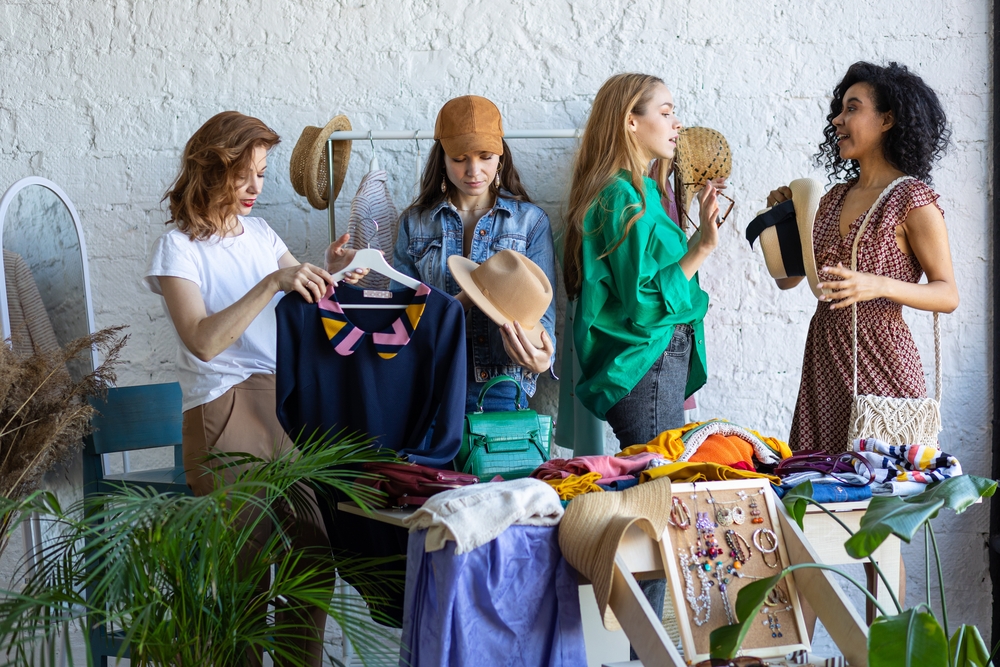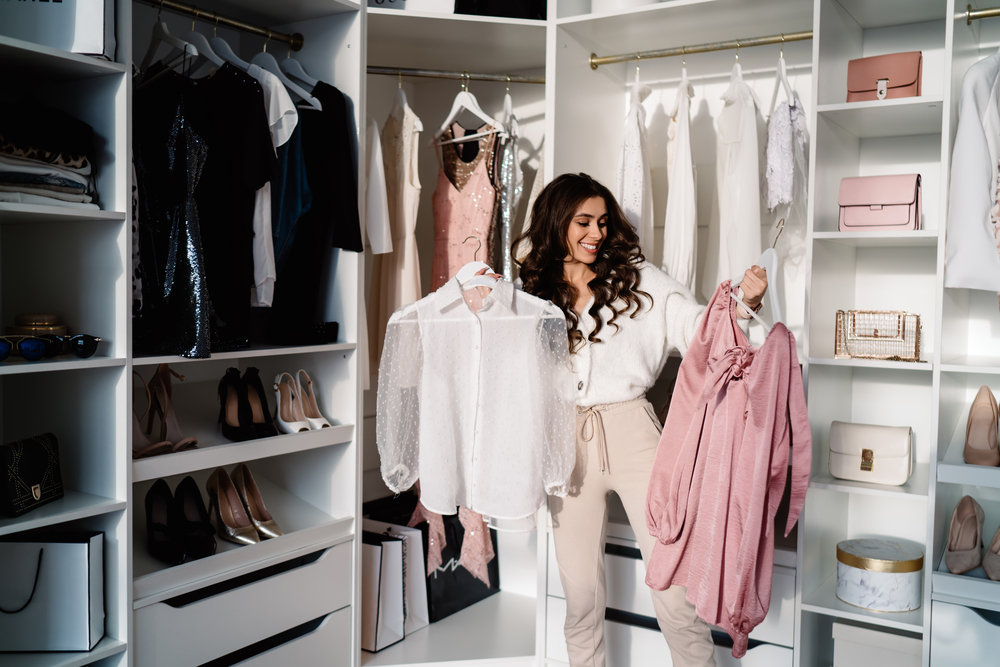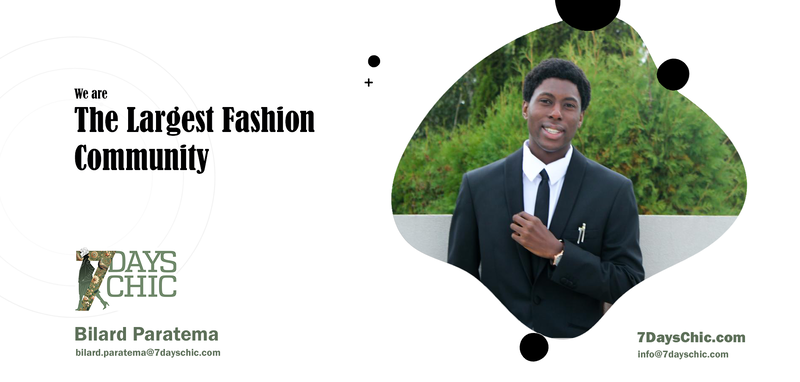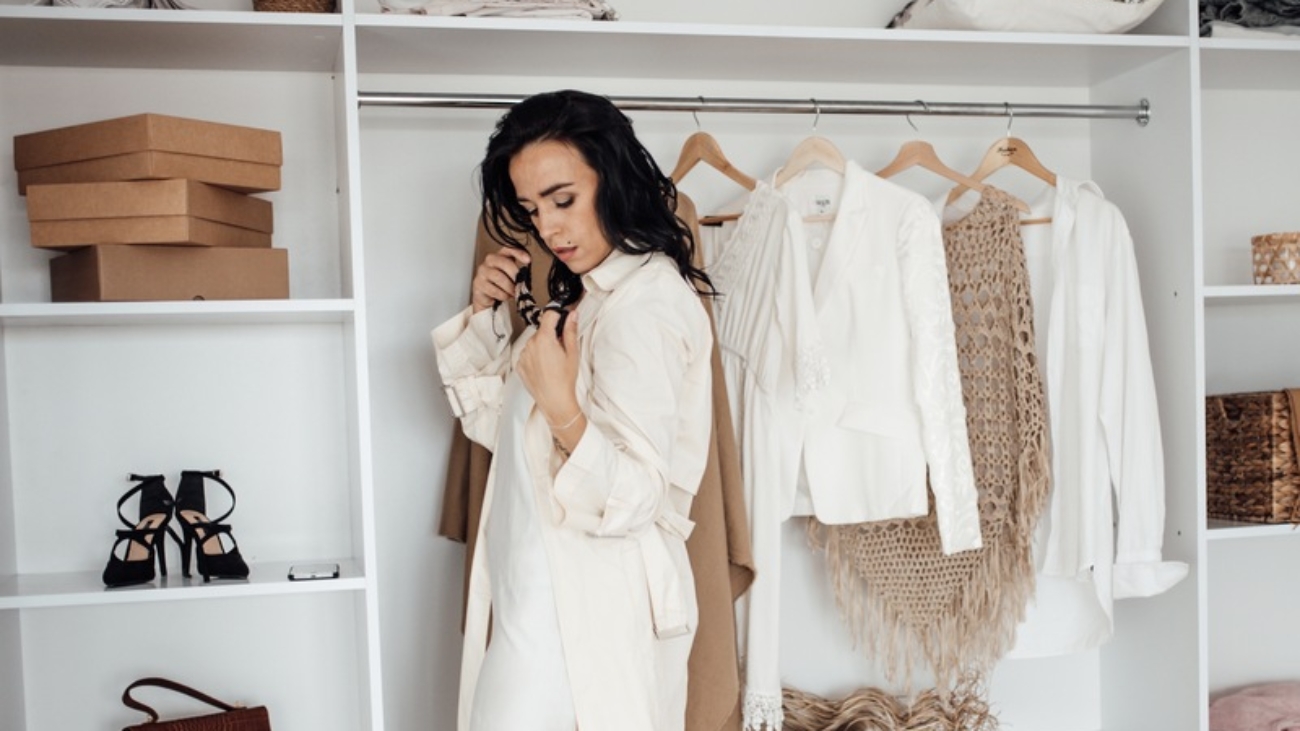6. Building a Capsule Wardrobe for Longevity
Wardrobing a cup for longevity might seem unusual at first, but it can be a charming and practical way to ensure the longevity of a favorite mug or cherished vessel. By crafting a cozy sleeve to wrap around the cup, you not only keep its contents warmer for longer periods but also protect its surface from chips and scratches. This practice involves selecting a durable, heat-resistant material, like wool or silicone, and fashioning it into a snug cover that can be slipped on and off easily. Adding a personalized touch, such as embroidery or unique patterns, adds sentimental value, making the cup not only a functional item but also a beloved part of your daily routine, promoting mindfulness and care.
What Is a Capsule Wardrobe and Why It Works
A capsule wardrobe consists of a limited number of versatile clothing items that can be mixed and matched to create a variety of outfits, promoting simplicity and sustainability. Typically, a capsule wardrobe includes around 25-50 pieces, encompassing tops, bottoms, dresses, outerwear, and shoes. The goal is to curate a collection of high-quality, timeless items that can be combined in numerous ways to suit different occasions and seasons. By streamlining your wardrobe to essential pieces, you reduce clutter, simplify decision-making, and minimize the need for constant shopping. This approach not only saves time and money but also promotes a more mindful and sustainable approach to fashion.
Key Essentials Every Wardrobe Should Have
Key essentials for every wardrobe include items such as a well-fitted blazer, a classic white shirt, versatile trousers or jeans, and a simple dress that can be dressed up or down. A well-fitted blazer adds sophistication and polish to any outfit, whether paired with trousers for a professional look or jeans for a casual ensemble. A classic white shirt is incredibly versatile and can be worn in numerous ways, from layering under sweaters to tucking into skirts. Versatile trousers or jeans provide a foundation for countless outfits, depending on the occasion. A simple dress that can be easily accessorized offers a timeless and elegant option for both daytime and evening wear. These essential items form the building blocks of a capsule wardrobe, providing a foundation for creating a variety of stylish and functional looks.
How to Mix and Match Pieces for Endless Outfit Options
Mixing and matching pieces involves combining different tops, bottoms, and outerwear to create diverse outfit combinations, maximizing the utility of each item. The key to successful mixing and matching is to choose items that complement each other in terms of color, style, and silhouette. Experiment with different pairings to discover new and unexpected combinations. Consider layering different pieces to add depth and dimension to your outfits. By creatively mixing and matching the pieces in your capsule wardrobe, you can create a wide range of looks that suit various occasions and personal styles.
The Role of Accessories in Elevating Classic Looks
Accessories play a crucial role in elevating classic looks by adding personality and style to simple outfits, enhancing overall versatility. Scarves, jewelry, belts, hats, and shoes can transform a basic outfit into something unique and eye-catching. Choose accessories that reflect your personal style and complement the colors and silhouettes in your capsule wardrobe. A statement necklace, a colorful scarf, or a stylish belt can add interest and flair to a simple outfit, while classic shoes can complete the look. By strategically using accessories, you can enhance the versatility of your capsule wardrobe and create a variety of stylish and personalized outfits.
Color Palette Considerations and Cohesion
Selecting a cohesive color palette is essential for maximizing the mix-and-match potential of a capsule wardrobe. Opt for a range of neutral colors, such as black, white, gray, navy, and beige, as the foundation for your wardrobe. Then, incorporate a few accent colors that complement your skin tone and personal style. Ensuring that all the pieces in your wardrobe coordinate well in terms of color allows for effortless outfit creation and minimizes the risk of clashing combinations. A cohesive color palette enhances the versatility of your capsule wardrobe and promotes a streamlined and stylish look.
Seasonal Adaptations and Layering Techniques
Adapting a capsule wardrobe for different seasons involves strategic layering and the addition of a few key seasonal pieces. In colder months, incorporate layering pieces such as sweaters, cardigans, and jackets to add warmth and dimension to your outfits. Opt for seasonal fabrics such as wool, cashmere, and corduroy to enhance comfort and style. In warmer months, focus on lightweight and breathable fabrics such as linen, cotton, and silk. Incorporate seasonal accessories such as scarves, hats, and gloves to complete your looks. By adapting your capsule wardrobe for different seasons, you can maintain a stylish and functional wardrobe year-round.
Identifying Gaps and Strategically Adding Pieces
Regularly assess your capsule wardrobe to identify any gaps or missing items that would enhance its versatility and functionality. Consider your lifestyle and the types of activities you engage in regularly. Do you need more professional attire for work, casual clothes for weekends, or special occasion outfits? Then, strategically add pieces that fill these gaps and complement your existing wardrobe. Focus on investing in high-quality, versatile items that will enhance the overall utility of your capsule wardrobe. By regularly assessing your needs and strategically adding pieces, you can ensure that your capsule wardrobe remains functional and stylish.
Documenting Outfits and Creating a Lookbook
To maximize the potential of your capsule wardrobe and streamline your daily dressing routine, create a lookbook of outfit combinations. Take photos of yourself wearing different combinations of your capsule wardrobe pieces and organize them into a visual guide. This will help you easily visualize different outfit options and avoid the stress of deciding what to wear each day. Refer to your lookbook for inspiration and guidance when creating outfits. By documenting your outfits and creating a lookbook, you can simplify your dressing routine and make the most of your capsule wardrobe.
The Role of Proper Fit and Alterations
Ensuring that all pieces in your capsule wardrobe fit perfectly is essential for maximizing their style and versatility. Invest in professional tailoring services to alter garments to fit your body shape and proportions. A well-fitted garment drapes better feels more comfortable and enhances your overall appearance. Alterations can transform an ill-fitting item into a flattering and functional piece that you’ll reach for time and time again. By prioritizing proper fit and investing in alterations, you can enhance the longevity and style of your capsule wardrobe.
Regularly Purging and Maintaining the Wardrobe
To maintain the effectiveness and functionality of your capsule wardrobe, regularly purge items that no longer fit, are damaged, or no longer align with your personal style. Donate or sell unwanted items to give them a new life and reduce textile waste. Regularly clean and organize your wardrobe to keep it in top condition. By purging and maintaining your capsule wardrobe, you can ensure that it remains a streamlined and functional collection of essential pieces that you love to wear. This approach promotes a more mindful and sustainable approach to fashion, reducing clutter and simplifying your life.
Defining Your Personal Style Identity
Before embarking on building a capsule wardrobe, it’s crucial to define your personal style identity. Understanding your style preferences helps to create a wardrobe that truly reflects who you are and what you love to wear. Consider the colors, silhouettes, fabrics, and patterns that you gravitate towards. Identify fashion icons or celebrities whose style you admire. By defining your personal style identity, you can create a capsule wardrobe that is both functional and authentically you.
Understanding Your Lifestyle Demands
A successful capsule wardrobe is tailored to your specific lifestyle demands. Consider your daily activities, work environment, social engagements, and travel habits. A stay-at-home parent will have different wardrobe needs than a corporate executive or a frequent traveler. By understanding your lifestyle demands, you can prioritize items that are practical, versatile, and suitable for your daily routine. This ensures that your capsule wardrobe is both functional and relevant to your needs.
Quality over Quantity: The Fabric Choice Matters
The longevity of a capsule wardrobe hinges on the quality of the materials used. Opting for high-quality, durable fabrics extends the lifespan of your pieces. Natural fibers like merino wool, cashmere, and silk are good options. Choose fabrics that withstand frequent wearing and washing without losing shape or structure. Investing in quality fabrics ensures that your capsule wardrobe remains stylish and functional for years to come, reducing the need for frequent replacements.
The Art of Accessorizing for Variation
Accessories are key to creating diverse looks within a limited wardrobe. Scarves, jewelry, belts, and statement shoes can transform a simple outfit into something entirely new. Experiment with different accessories to add personality and flair to your classic pieces. A silk scarf can add a pop of color to a neutral outfit, while a statement belt can cinch the waist and create a more defined silhouette. By mastering the art of accessorizing, you can create a variety of stylish looks with a minimal number of garments.
Mindful Consumption and Avoiding Impulse Buys
To maintain the integrity of your capsule wardrobe, it’s essential to practice mindful consumption and avoid impulse buys. Resist the temptation to purchase trendy or unnecessary items that don’t align with your personal style and wardrobe needs. Before making a purchase, ask yourself if the item truly complements your existing wardrobe.
7. Sustainable Fashion Choices
Sustainable fashion choices are increasingly gaining popularity as consumers become more aware of the environmental and social impacts of the fashion industry. By opting for sustainable fashion, individuals make a conscious effort to reduce waste and energy consumption and support ethical labor practices. This can be achieved by purchasing garments made from eco-friendly materials, such as organic cotton or recycled fabrics, and choosing brands that prioritize fair trade and transparent supply chains. Additionally, embracing secondhand shopping or renting clothes can significantly minimize one’s fashion footprint. Therefore, sustainable fashion not only promotes environmental conservation but also fosters a more equitable world.

Supporting Ethical and Sustainable Brands
Supporting ethical and sustainable brands involves seeking out companies that prioritize fair labor practices, eco-friendly materials, and transparent supply chains (Ellen MacArthur Foundation, 2017). Look for certifications such as Fair Trade, GOTS (Global Organic Textile Standard), and B Corp, which indicate that a brand has met certain standards for ethical and environmental performance. Research a brand’s values and production methods to ensure that they align with your own. By choosing to shop with ethical and sustainable brands, you can support a more responsible and equitable fashion industry (Armstrong, 2018).
Understanding the Impact of Fabric Choices
Understanding the impact of fabric choices involves considering the environmental and social implications of different materials such as organic cotton, linen, and wool (Henninger, 2015). Natural fibers like organic cotton, hemp, and linen are eco-friendly choices, as they require fewer resources and are biodegradable. Synthetic fibers, like polyester, are derived from petrochemicals and can shed microplastics when washed, so choose garments made from natural fibers to reduce your environmental footprint. Opt for wool from ethical and sustainable sources, with certifications like Responsible Wool Standard, which assures animal welfare and sustainable land management. By making informed fabric choices, you can minimize your environmental impact and support a more sustainable fashion system.
The Benefits of Slow Fashion and Mindful Consumption
Embracing slow fashion and mindful consumption reduces waste, supports ethical production, and encourages a more thoughtful approach to personal style (Fletcher, 2010). Slow fashion refers to sustainable fashion practices and a conscious approach to producing clothes. Unlike fast fashion, which follows just a trend, garments are often made from eco-friendly or recycled materials that go beyond trends. Resisting the urge to splurge and reassessing your shopping habits helps to break free from overconsumption. Curate your wardrobe so that every piece feels essential and brings you joy. Opting for a simpler style keeps us from overbuying. By practicing mindful consumption, you can reduce your environmental footprint, support ethical labor practices, and cultivate a more authentic sense of style.
Clothing Care Tips to Extend the Life of Garments
Proper clothing care, including gentle washing, air drying, and proper storage, extends the life of garments and reduces the need for frequent replacements (Slater, 2003). Give a second life to your much-loved garments by learning basic mending and tailoring skills. Whether it’s sewing a button or fixing a hem, these little skills can double or triple the lifespan of your wardrobe. Swap synthetic for natural fibers to reduce your environmental footprint, as synthetic fibers, like polyester, are derived from petrochemicals and can shed microplastics when washed. Mend and tailor garments to give them a second life. By adopting these clothing care tips, individuals can ensure that their garments remain in excellent condition for years to come, reducing the need for frequent replacements and promoting a more sustainable approach to fashion.
Supporting Circular Fashion Models
Embracing circular fashion models, such as reuse, repair, resale, and upcycling, helps to cut down on the endless cycle of production and waste. Turn your old jeans into a trendy denim skirt, or cut your shirts into crop tops, as upcycling is an artistic endeavor that keeps textiles out of landfills while giving your creativity a workout (Ellen MacArthur Foundation, 2017). Second-hand shopping decreases the demand for new items, reducing the environmental impact. Explore luxury consignment platforms as the perfect place to find high-quality designer pieces for less and give them a longer life, while reducing fashion’s environmental impact. Seek out recycled materials, as more and more brands are incorporating recycled materials into their designs, from plastic bottles to post-industrial waste, these fabrics are a positive step towards a circular economy.
Embracing Vegan and Animal-Friendly Materials
Opting for vegan and animal-friendly materials, such as hemp fibers, pineapple leather, and organic cotton, are environmentally and animal-friendly alternatives to leather and wool (Joy et al., 2012). Stella McCartney designs without using leather or fur, leading the way in ethical fashion. Vegan fashion is very much on the rise nowadays, as people are not only thinking about their impact on the environment but also about animal welfare. There is an increasing choice of sustainable materials that offer consumers a green option to reduce their environmental footprint and unlimited bragging rights.
Minimizing Water Usage and Pollution
Reducing water usage and pollution in the fashion industry involves choosing fabrics that require less water to produce and avoiding garments that are treated with harmful chemicals (Niinimäki et al., 2020). Stella McCartney, a UK-based fashion company, is well-known for being committed to eco-friendly practices. The brand focuses on using materials that are good for the environment to keep its ecological footprint low. By selecting fabrics that minimize water consumption and avoiding chemically intensive processes, consumers can help reduce the environmental impact of their clothing choices.
Promoting Fair Labor Practices
Supporting fair labor practices in the fashion industry involves seeking out brands that ensure safe working conditions, fair wages, and respect for workers’ rights throughout their supply chains (Hughes, 2019). Look for certifications such as Fair Trade, which indicate that a brand has met certain standards for ethical labor practices. Research brands and their practices to identify companies that are committed to transparency and accountability in their supply chains. By choosing to support brands that prioritize fair labor practices, consumers can contribute to a more just and equitable fashion industry.
Investing in Garment Longevity and Repair
Prioritizing garment longevity and repair involves choosing well-made items that are designed to last and taking proactive steps to maintain and repair clothing as needed (Farrer, 2021). Give a second life to your much-loved garments by learning basic mending and tailoring skills. Whether it’s sewing a button or fixing a hem, these little skills can double or triple the lifespan of your wardrobe. Mend and Tailor garments to give them a second life. Investing in durable, timeless pieces and learning basic repair skills can significantly extend the lifespan of your wardrobe and reduce the need for frequent replacements.
Supporting Local Artisans and Craftsmanship
Choosing to support local artisans and craftsmanship contributes to a more sustainable and ethical fashion ecosystem. Local artisans often use traditional techniques and natural materials, minimizing environmental impact. By purchasing handmade garments and accessories, consumers can support small businesses, preserve cultural heritage, and reduce the carbon footprint associated with long-distance transportation (Gregson & Crewe, 2003).
Advocating for Policy Changes and Transparency
Individuals can advocate for policy changes and increased transparency in the fashion industry by supporting organizations that promote sustainable practices and lobbying for stricter regulations (Carrigan & Attalla, 2001). Transparency in the supply chain, including information on fabric sourcing, manufacturing processes, and labor practices, enables consumers to make informed choices and hold brands accountable for their impact. Supporting policy changes that promote sustainability and transparency can drive systemic improvements in the fashion industry.
Embracing Clothing Swaps and Rentals
Participating in clothing swaps and rentals offers a sustainable alternative to purchasing new garments and reduces textile waste.
8. Overcoming the Fear of “Missing Out” on Trends
Overcoming the fear of missing out (FOMO) on transitional experiences often involves a shift in mindset that embraces individuality and the uniqueness of one’s journey. By recognizing that every transition is deeply personal and doesn’t follow a universal timeline, individuals can begin to appreciate their path without comparing it to others. It is vital to focus on personal growth and the value of experiences tailored to one’s unique needs and circumstances rather than societal expectations. Engaging in practices like mindfulness and self-reflection can help ground individuals in the present moment, thus reducing anxiety about missed opportunities. By cultivating gratitude and acknowledging one’s achievements, the fear of missing out gradually diminishes, paving the way for a more content and fulfilling journey.

How to Develop a Confident Personal Signature Style (Instead of Chasing Trends)
Instead of feeling pressured to constantly adopt the latest trends, developing a confident personal signature style empowers you to resist FOMO by grounding your fashion choices in a strong sense of self (Entwistle, 2000). Begin by defining your style goals: What message do you want to communicate through your clothing1? Aim for sophistication, approachability, or creativity, ensuring your wardrobe aligns with your lifestyle – whether it’s work, social events, or an active life.. Take inspiration from iconic styles and those whose style resonates with you, saving images and noting recurring elements you admire. Audit your current wardrobe to pinpoint patterns, experiment with confidence to evolve your style trying different textures and silhouettes to see what feels most authentically you3. Creating a mood board with images reflecting styles you admire can also assist in your development, then start with staple items, like a well-fitted blazer or classic jeans, and refine through trial and error to see what feels right.. Developing a personal signature style helps you make a lasting impression while expressing your individuality1. By investing in tailored staples like bespoke suits or tailored sports jackets, you can enhance your physique and exude confidence and class1. Develop a well-defined style concept and explore what resonates with you to express through your look, adding power and authenticity. This approach ensures your wardrobe reflects your true self, minimizing the fear of missing out on fleeting trends that don’t align with your personal aesthetic.
Shifting from Trend-Following to Trend-Setting
Liberating yourself from trend-following involves embracing individuality and daring to express your unique perspective through clothing choices, transforming yourself from a passive consumer to an active creator of style (Kawamura, 2005). Instead of slavishly adhering to the dictates of fashion magazines and influencers, cultivate a critical eye and develop your own sense of what is stylish and meaningful. Challenge conventional notions of beauty and fashion, experimenting with unconventional combinations, mixing high and low fashion, and incorporating vintage or repurposed pieces into your wardrobe. Allow your personal values and passions to inform your style choices, using clothing as a means of self-expression and social commentary. Draw inspiration from diverse sources, celebrating cultural heritage, artistic movements, or historical figures who defied societal norms. Develop the confidence to stand out from the crowd and create looks that are truly original, reflecting your unique personality and perspective. By becoming a trendsetter, you inspire others to embrace their individuality and challenge the superficiality of the fashion industry, fostering a more creative and inclusive environment.
Finding Inspiration from Timeless Icons Instead of Seasonal Fads
When seeking inspiration for building a lasting and elegant wardrobe, turn to the enduring style of timeless icons rather than succumbing to the ephemeral allure of seasonal fads (Lurie, 1981). Figures like Audrey Hepburn, Grace Kelly, and Katharine Hepburn possessed an innate understanding of classic style, characterized by simplicity, sophistication, and a focus on quality over quantity. Analyze their signature looks, paying attention to the silhouettes, fabrics, and accessories they favored. Emulate their attention to fit and proportion, selecting garments that flatter your figure and enhance your natural features. Adopt their preference for neutral color palettes that allow for versatility and timeless appeal. Remember that these icons were not simply copying trends; they were creating a personal style that reflected their inner selves. By studying their example, you can learn to identify classic elements that transcend fleeting fads and build a wardrobe that is both stylish and enduring, reflecting a sense of timeless grace and sophistication.
Learning to Appreciate Wardrobe Longevity
Cultivating an appreciation for wardrobe longevity requires a fundamental shift in mindset, moving away from the culture of disposability that fuels the fast fashion industry and embracing a more sustainable and mindful approach to clothing (Gwilt, 2011). This involves recognizing the value of well-made, enduring pieces that can be worn for years, developing a deeper connection with your clothing, and taking proactive steps to care for and maintain them. When making purchasing decisions, prioritize quality over quantity, seeking out garments that are made from durable fabrics and constructed with attention to detail. Learn to mend and repair your clothes, extending their lifespan and reducing waste. Store your clothing properly to prevent damage and preserve its condition. By appreciating the longevity of your wardrobe, you reduce your environmental impact, save money, and cultivate a more meaningful relationship with your clothing, cherishing each piece for its history, its comfort, and its enduring style.
Cultivating Self-Confidence and Body Positivity
Fostering self-confidence and body positivity is paramount to overcoming the fear of missing out on trends and embracing a sustainable and authentic approach to fashion (Piran, 2001). This involves shifting your focus from external validation to internal self-acceptance and celebrating your body as it is, rather than striving to conform to unrealistic beauty standards perpetuated by the fashion industry. Practice self-care by engaging in activities that nourish your mind, body, and spirit, such as exercise, meditation, or creative expression. Challenge negative self-talk and replace it with positive affirmations that reinforce your self-worth and inner beauty. By cultivating self-confidence and body positivity, you can feel more comfortable and empowered in your own skin, regardless of the latest trends or societal pressures. Embracing your personal style and expressing yourself authentically empowers you to resist the pressure to conform and cultivate a more fulfilling relationship with fashion.
Focusing on Personal Values and Priorities
Aligning your fashion choices with your personal values and priorities provides a strong sense of purpose and direction, effectively reducing the fear of missing out on fleeting trends (Sheth et al., 1999). Begin by identifying the values that are most important to you, such as environmental sustainability, ethical labor practices, social justice, or supporting local
9. Conclusion: The Power of a Thoughtful Wardrobe
The power of the wardrobe lies in its ability to transform not only our appearance but also our confidence and perception. Clothing is more than just fabric; it represents our identity, mood, and aspirations. A well-curated wardrobe can empower us, offering a sense of agency and self-expression. For instance, dressing in professional attire can enhance one’s confidence in a business meeting, while casual clothing might facilitate relaxation and creativity. Furthermore, the wardrobe acts as a bridge between personal style and societal norms, allowing individuals to navigate different social contexts with ease. Ultimately, the wardrobe is a powerful tool that reflects and amplifies personal and cultural narratives.

Why Investing in Timeless Pieces Saves Time, Money, and Stress
Investing in timeless pieces saves time, money, and stress by reducing the need for frequent shopping trips and ensuring a versatile wardrobe that can be adapted to various occasions (Zimmerman, 2003). A thoughtful wardrobe built around classic staples eliminates the constant pressure to keep up with ever-changing trends. The versatility of these pieces means you spend less time agonizing over what to wear, as they effortlessly mix and match, creating a range of outfits suitable for almost any event. While the initial investment in high-quality, timeless items may be greater, the long-term savings are significant, as these garments last for years, negating the need for constant replacements driven by fast fashion cycles. This approach also significantly reduces the stress associated with chasing trends, managing a cluttered wardrobe, and the guilt of contributing to unsustainable consumption patterns. A wardrobe that is both timeless and thoughtful, simplifies the decision-making process, making daily dressing a more enjoyable and efficient task.
The Personal and Environmental Benefits of Choosing Quality Over Trends
Choosing quality over trends offers profound personal and environmental benefits, contributing to a more sustainable lifestyle and a wardrobe that reflects individual style rather than fleeting fads (Ellen MacArthur Foundation, 2017). From a personal perspective, focusing on quality fosters a deeper appreciation for craftsmanship, materials, and the artistry of clothing design. It shifts the focus from external validation to internal satisfaction, empowering you to cultivate a style that is authentic, comfortable, and confidence-boosting. Environmentally, prioritizing quality reduces textile waste, minimizes the demand for resource-intensive production processes, and supports brands committed to ethical and sustainable practices. By choosing quality over trends, you contribute to a circular fashion system that values longevity, durability, and responsible production, while cultivating a wardrobe that embodies your values and reflects your unique personal style.
How Embracing Slow Fashion Can Redefine Your Relationship with Clothing
Embracing slow fashion redefines the relationship with clothing by promoting a more mindful and appreciative approach, fostering a deeper connection to personal style and values (Fletcher, 2010). This involves slowing down the consumption cycle, making conscious purchasing decisions, and valuing the craftsmanship, materials, and stories behind each garment. It encourages a shift from viewing clothing as disposable commodities to recognizing them as cherished possessions that reflect your personality and values. Slow fashion fosters creativity and self-expression, empowering you to experiment with different styles, repurpose existing items, and create unique looks that showcase your individuality. It also promotes ethical and sustainable practices, supporting brands committed to fair labor, environmental responsibility, and transparency. By embracing slow fashion, you cultivate a more fulfilling, meaningful, and responsible relationship with clothing, transforming it from a source of anxiety and consumerism into an expression of creativity, sustainability, and personal identity. This approach also allows individuals to connect with clothing on a more profound level, developing a deeper understanding of the labor, resources, and artistry involved in its creation, fostering a sense of gratitude and respect for the garments they own.
Continue Reading:
How to Avoid Fast Fashion Fatigue and Build a Sustainable Wardrobe / Part 1
How to Avoid Fast Fashion Fatigue and Build a Sustainable Wardrobe / Part 2
By Bilard Paratema




Add a Comment